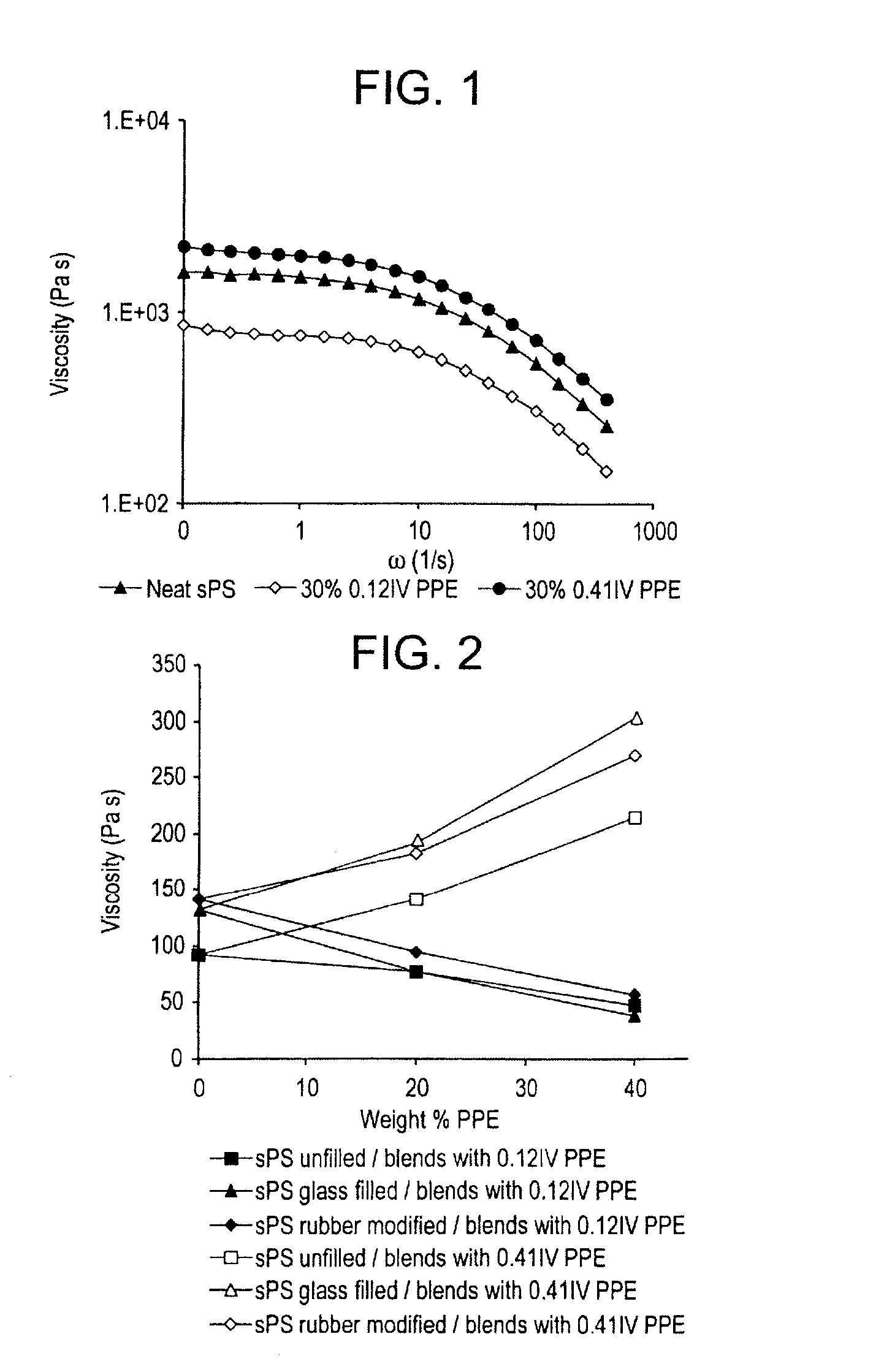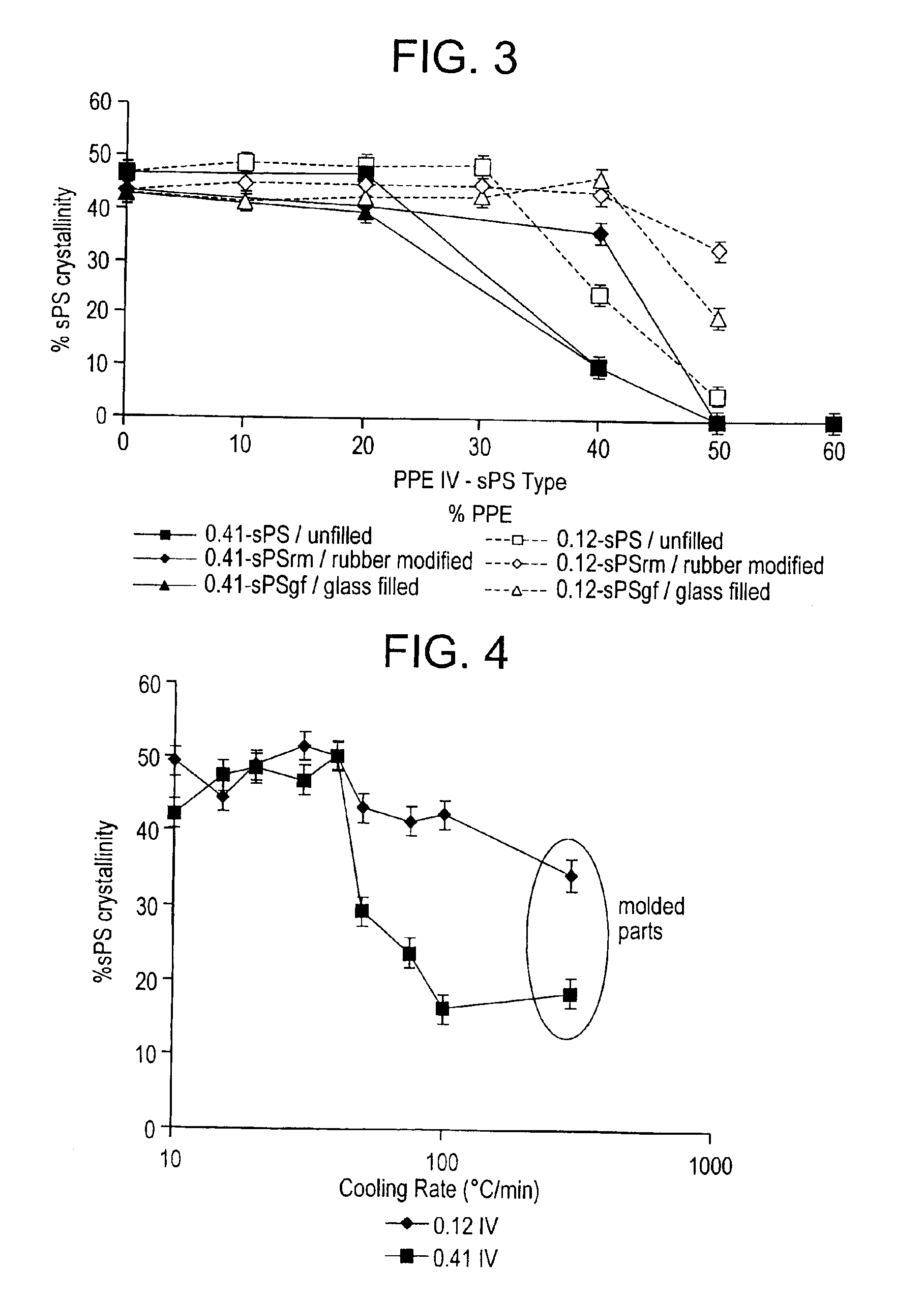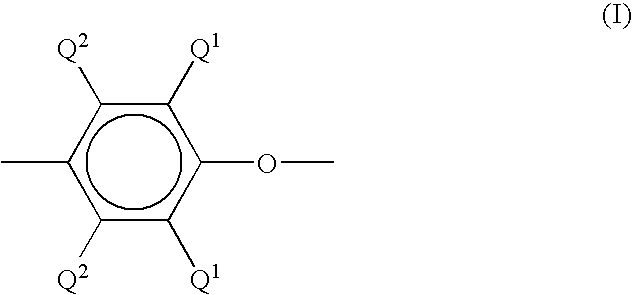Syndiotactic polystyrene blends
a technology of syndiotactic polystyrene and polystyrene, which is applied in the field of syndiotactic polystyrene and poly (arylene ether), can solve the problems of reducing the crystallinity, reducing the heat and chemical resistance, and reducing the level and rate of syndiotactic polystyrene crystallization
- Summary
- Abstract
- Description
- Claims
- Application Information
AI Technical Summary
Benefits of technology
Problems solved by technology
Method used
Image
Examples
example 1
[0033]Syndiotactic polystyrene with a weight average molecular weight (Mw) of 250,000 atomic mass units was combined with 30 weight percent (wt %) of poly(arylene ether)s having an intrinsic viscosity of either 0.12 dl / g or 0.40 dl / g. Melt viscosity was then measured using by parrallel plate dynamic viscometry at 280° C. As can be seen in FIG. 1, the blend containing poly(arylene ether) with an intrinsic viscosity of 0.40 dl / g has a higher melt viscosity than unblended syndiotactic polystyrene while the blend containing poly(arylene ether) with an intrinsic viscosity of 0.12 dl / g has a melt viscosity less than the unblended syndiotactic polystyrene.
example 2
[0034]Syndiotactic polystyrene, syndiotactic polystyrene containing 30 wt % glass filler, and syndiotactic polystyrene comprising an impact modifier were combined with poly (arylene ether) having an intrinsic viscosity of 0.12 dl / g or 0.40 dl / g in varying amounts. Capillary viscosity was measured at 290° C. As can be seen in FIG. 2 blends comprising poly(arylene ether) having an intrinsic viscosity of 0.12 dl / g have a significantly lower viscosity than syndiotactic polystyrene or blends of syndiotactic polystyrene and poly(arylene ether) having an intrinsic viscosity of 0.40 dl / g.
example 3
[0035]Syndiotactic polystyrene, syndiotactic polystyrene containing 30 wt % glass filler, and syndiotactic polystyrene comprising an impact modifier were combined with poly (arylene ether) having an intrinsic viscosity of 0.12 dl / g or 0.40 dl / g in varying amounts. Blends as well as the syndiotactic polystyrene were recrystallized from the melt at a controlled cooling rate of 20° C. / minute. Crystallinity was measured by differential scanning calorimetry (DSC). The results shown in FIG. 3 indicate that at a given level of poly(arylene ether), blends comprising poly(arylene ether) having an intrinsic viscosity of 0.12 dl / g have a higher level of crystallinity than blends comprising poly(arylene ether) having an intrinsic viscosity of 0.40 dl / g. This difference is especially noticeable in blends comprising filler and in blends comprising greater than 30 wt % of poly(arylene ether).
PUM
| Property | Measurement | Unit |
|---|---|---|
| average diameter | aaaaa | aaaaa |
| Mw | aaaaa | aaaaa |
| wt % | aaaaa | aaaaa |
Abstract
Description
Claims
Application Information
 Login to View More
Login to View More - R&D Engineer
- R&D Manager
- IP Professional
- Industry Leading Data Capabilities
- Powerful AI technology
- Patent DNA Extraction
Browse by: Latest US Patents, China's latest patents, Technical Efficacy Thesaurus, Application Domain, Technology Topic, Popular Technical Reports.
© 2024 PatSnap. All rights reserved.Legal|Privacy policy|Modern Slavery Act Transparency Statement|Sitemap|About US| Contact US: help@patsnap.com










